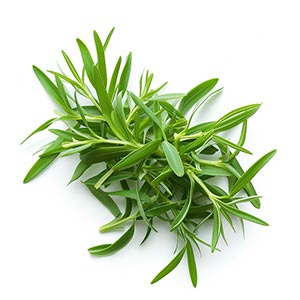Tarragon, with its distinctive herbaceous and slightly anise-like aroma, has been used in fragrances for its unique scent profile. Historically, tarragon has been used in various cultures for its aromatic and medicinal properties. It was often used in traditional medicines and rituals. In modern perfumery, tarragon adds a fresh, green note to fragrances. Its unique scent profile can add complexity and depth to a fragrance, making it feel more sophisticated and refined. Tarragon pairs well with other herbal and citrus notes, making it a versatile ingredient in the fragrance industry.
Natural or Synthetic?
Natural tarragon oil is typically obtained through steam distillation of the leaves of 'Artemisia dracunculus', capturing its unique herbal and slightly spicy aroma. However, the complexity of its natural scent and the variability of oil yield make synthetic counterparts a practical choice in perfumery. Synthetics are used to achieve a consistent and replicable tarragon note, especially in large-scale fragrance production.
Fragrance Families Tarragon Most Commonly Found In
Show fragrances that contain Tarragon as a note



